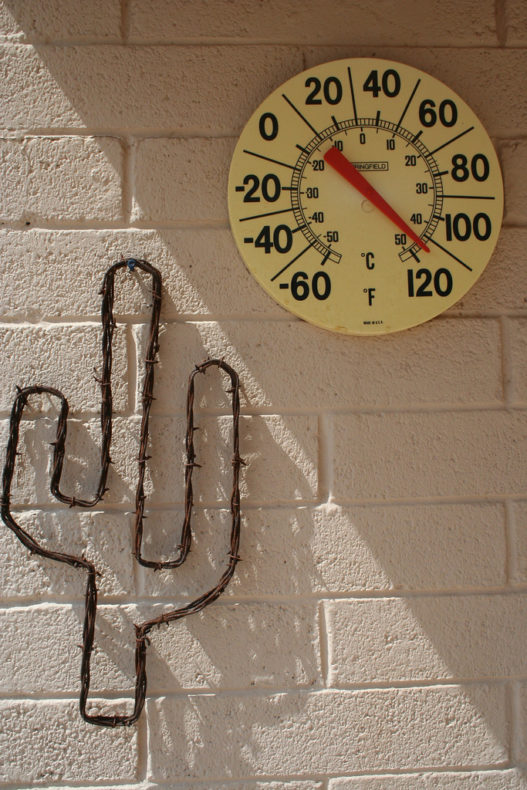
Five years ago I wrote a post about Pat Elliott, a woman with chronic leukemia. She was trying to figure out how to pay for her medication. At the time, Gleevec cost about $5,000 a month. A generic version of Gleevec went on the market in 2016, but it still costs more than $4,000 a month. In Canada, however, a month’s supply of generic Gleevec costs less than $800 a month. President Trump has accused the pharmaceutical industry of “getting away with murder.” But yesterday the Senate confirmed Alex Azar, Trump’s pick to run Health and Human Services. Azar served as president of Eli Lilly USA. The price of their insulin tripled under his tenure.
Phoenix is scorching in the summer, and Pat Elliott had been standing for hours. So she wasn’t alarmed one August day in 2009 to find her feet swollen. “It must be the weather,” Elliott thought. But they also ached. The pain was horrendous. So she called her doctor, and he told her to come in. Reluctantly she went.
Several blood tests and a bone marrow biopsy later, Elliott learned she had a type of blood cancer called chronic myelogenous leukemia (CML). Her white cell count was sky high, her spleen was swollen, and her kidneys were failing.
All cancer is the result of genetic abnormalities. In the case of CML, the problem is a genetic swap. The tip of chromosome 22 breaks off and attaches itself to chromosome 9, and a chunk of 9 fuses with 22. This swap results in the formation of a new gene, a chimera called BCR-ABL. The gene codes for an enzyme that drives cells to incessantly divide.
Two decades ago, the best treatment for CML was a bone marrow transplant, a dangerous procedure with only limited success. Back then just 30% of patients diagnosed with CML could expect to live five years. In 2001, however, the US Food and Drug Administration approved a new drug, Gleevec. The medicine disables the defective Bcr-Abl enzyme, halting the rampant cell division. Today, the five-year survival of CML patients taking Gleevec is 89%.
In his masterful cancer tome Emperor of All Maladies, Siddhartha Mukherjee recalls seeing the astounding effects of Gleevec for the first time: When he looked at the patient’s blood smear, he could find no evidence of the immature blast cells that characterize the disease. The cells were completely normal. “It was hard to reconcile this field of blood cells in front of my eyes with the diagnosis; not a single leukemic blast was to be seen,” he writes. “If this man had CML, he was in a remission so deep that the disease had virtually vanished from sight.”
Gleevec isn’t without side effects, and it’s not a cure. But for Elliott and tens of thousands of others, the medication has been a lifesaver. “The oral therapy is a blessing,” Elliott says. “You’ve got a way to manage this disease.”
I could end the story here. That quote is a nice, if predictable way to wrap up an article about a wonder drug. Too often science stories do stop here. And it’s easy to see why. A tale about a new drug fixing a dread disease makes for a snappy headline. The story is optimistic. It’s clear cut.
But Elliott’s story doesn’t end with a prescription. That’s where it begins. You see, Gleevec costs roughly $6,000 a month. And Elliott will likely have to take it –- or another equally expensive drug –- for the rest of her life. When Elliott was diagnosed with CML, she didn’t have insurance. As a survivor of breast cancer, she couldn’t get it. Fortunately, she lives in Arizona, one of only a handful of states that covers single, childless adults under Medicaid. “I was blessed,” she says.
That coverage isn’t guaranteed, however. State budgets are tight. When I first spoke with Elliott in March 2011, Arizona lawmakers were considering eliminating all childless adults from Medicaid to cut healthcare costs. That didn’t happen. Instead lawmakers imposed a freeze on new enrollments. Because she was already enrolled, Elliott remained in the program. But many others lost their benefits. According to Avik Roy of Forbes, the number of childless adults on Medicaid in Arizona fell “from 227,000 before the freeze to 86,000 today: a decrease of 141,000.”
The situation is “infuriating,” Elliott says. “I’ve worked since I was eight years old. I’ve been a productive, tax-paying, law-abiding community volunteer. All that happened was I got sick.” And Elliott’s struggles are far from over. To keep her Medicaid benefits, she must still stay below the federal poverty line; she can earn no more than $900 a month. That means turning away work.
Yet Elliott has a reason to be hopeful. This month Arizona governor Jan Brewer announced that the state would participate in the federal expansion of Medicaid. That means that Elliott will keep her Medicaid benefits, and many other childless adults will be able to enroll in the program. Elliott should be able to earn a bit more too. The expansion raises the income cap by 33%.
Elliott’s survival depends on Gleevec, yes, but it also depends on Medicaid. Without the program, she has no hope of paying for the medication that’s keeping her alive. “The worst part, for me, has been the cost,” she says. “My whole future life has to be built around paying for treating this disease.”
***
Update: The original post said that Gleevec costs $5,000/month. Elliott says the cost is now $6,000. The original post also said that Elliott would not be able to get a bone marrow transplant because Arizona’s Medicaid program decided to stop paying for the procedure. Funding has since been restored.
Image credit: cogdogblog via Flickr.